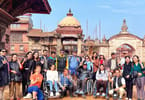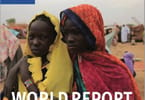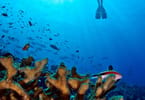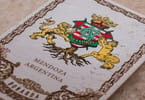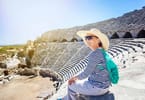LALOMANU BEACH, Samoa – One early morning less than two years ago, Sili Apelu had no clue that in a matter of hours his life would literally turn upside down. Literally. On that day, fourteen members of his family were washed away by the crushing impact of over twenty-foot waves and his surviving relatives were left with both their lives in tatters. During the minutes and hours after an earthquake struck off of the shores the South Pacific island of Samoa, he was forced to make life-wrenching decisions. Survival was the order of the day.
When he resurfaced from his ordeal of the morning of September 29, 2009, Apelu didn’t just set out to rebuild his life. He made it his mission to rejuvenate the small beachside community on the eastern tip of Upolu Island. With his family, a group of his faithful guests and friends, he set out to recreate at least a semblance of the life of the community that he had previously honed on the remote and scenic Lalomanu Beach.
Rebuilding in Samoa, however, would always be a community affair. Nestled in the vast oceans of the South Pacific, age-old Samoan culture is based on Fa’a Samoa, a traditional way of life, which to this day is anchored in chiefly traditions, reverence for family, and community.
Even before the tsunami, Apelu rented fales – traditional Samoan thatched-roof constructions. Tourists rent fales to be in ear-shot of the ocean waves, lagoons, and shining corals. On that particular morning the seventeen fales of Taufua Beach Fales, his outfit, were booked solid. Ninety-six guests were staying on the property, he recalls, with some overflow clients housed on the neighboring properties.
According to the US Geological Survey, on that morning at 6:48 am, a magnitude 8.1 earthquake struck the Samoan Islands region, with the epicentre 190 km south of Apia, the capital. Samoa is located in the region known as the Ring of Fire, and can experience tsunamis from any direction. But the stark reality was that an earthquake here could leave as little as nine minutes before harnessing a potentially deadly tsunami onto these shores.
Early morning buzz at Lalomanu beach
Apelu’s family were up and buzzing at 4:00 am that morning. The household said prayers daily at the insistence of his 97-year-old ailing father. “I was still sleeping, and when the earthquake rumbled,” remembers Apelu, “I thought someone was playing a joke on me and shaking my bed.”
He instinctively knew what had happened. Given the intensity of the shaking and his having worked for a seismological observatory for six years, he suspected what awaited them. A tsunami. He knew that it would be intense, since generally earthquakes were felt less on the absorbing sandy beaches of Lalomanu.
He brought the land cruiser from the back and turned on the radio before escaping into the office where his daughter had already fired up the Internet. He sat down and asked to see for himself, searching for warnings. That was all that there was time for.
Something strange and eerie was happening. By the time he had typed in the US Geological Survey website into his web browser, the nearby lagoon had all but emptied. It was sucked out to sea, the sign that a massive wave headed right towards the beach.
“My wife suddenly yelled for people to run for their lives,” he remembers, “People were running all around. Somebody brought a land cruiser from across the road and many jumped onto it. They were panicking.”
Apelu, standing in front of the office, suddenly faced the two massive piles of water emerging from the ocean in the distance. The pandemonium that ensued was palpable. Although they didn’t know it at the time, the white Land Cruiser would have no chance of escaping the gushing waters. The only safe place was far beyond the path of a small road that crossed Lalomanu Beach.
Apelu called on his wife to escape, his son continued to warn the unsuspecting guests to run for their lives. Many didn’t even know where to run while others had little clue of what a tsunami was in the first place.
“I started running away from the wave that was sweeping in from behind. But by then the water had already inundated the road, which told me that the wave had hit the upper part of the village before it did our side. While I was running, the wave was bulldozing the beach fales.”
“I didn’t make it to the foot of the mountain before I was caught.”
Waves hits Lalomanu Beach
Sili Apelu still doesn’t understand how he survived the first waves that hit Lalomanu Beach. The day conjures painful images. He chokes when recounting the story, taking deep breaths and intermittent, lengthy pauses. Tears run down his face as he confronts his memories of that day.
Apelu ran between two solid structures as the wall of waters approached. He quickly grabbed his four-year-old nephew who was standing at the door, perplexed.
“I grabbed him,” he remembers, “I saw that the water was already in front of us and imagined that it had gotten into the house and was trapped before it escaped quickly through the door. All I did was to put my back against the wall and hung on to my nephew, but in a split second the building collapsed and took us away…”
Apelu hung on to his nephew as the world crumbled around them. The next image he remembers was being literally clamped onto a series of planks of wood, timbers that he thinks were from the base of a pigsty that had been on the foot of the nearby mountain.
“I had my nephew with me. Then I looked up and all that I remember was water for about two meters above me,” he says, “That was the first wave… and then I had to decide what to do with my nephew.”
“I thought that if I released him he would catch some air above, because I struggled to get away from what was locking me down. But I couldn’t. I had to decide what to do.”
“I let him go,” he says painfully. Another wave arrived shortly thereafter. Apelu looked up, now without his nephew.
Somehow amidst the chaos, Apelu survived. The water receded from the beach, and further down, it remained like stagnant pools for three days. Bodies emerged from the sludge. Where houses stood, mere foundations remained.
His wife had been carried away, but she was saved by the floating roof of a fale which she could grab onto in an ordeal that she describes like being strewn in a cycle of a washing machine. Apelu’s father’s was among the countless bodies that were found in the days that followed. In all, fourteen members of his family lost their lives. Five of his neighbor’s family, four in the next, and three in the next.
“Our daughter survived, and one of our grandchildren,” he says, “Our eldest grandchild was taken by the tsunami. We had another child that survived, luckily some were in Apia.”
“As far as our losses are concerned… Now we are more concerned about the living, and we have to move forward,” he says.
After the tsunami
The tsunami that hit Samoa on that day killed at least 149 people in Samoa, 34 in neighboring American Samoa where the waves caused widespread damage to infrastructure in Pago Pago, its capital. Damage was also recorded in Tonga, as far away as Wallis and Futuna Islands, while heightened waves were witnessed in New Zealand and French Polynesia.
In the surrounding regions of Samoa, thousands had lost their homes, boats, or cars. Villages were reduced to rubble, roads washed away in the four massive waves that pounded the island within minutes of each other.
The community at Lalomanu Beach continues to reveal the scars of the tsunami of 2009, with shells of one-time homes scattered along the main road. Family, however, have been rebuilding – some constructing fales up in the hills, fearful of the sea. But rebuilding is part of the healing process, says Apelu.
Taufua Beach Fales have reconstructed almost all of the fales which were completely destroyed less than two years ago, in a process that included both reconstruction and reclaiming of the white sands which were also washed away.
“As Christians, we understand that earthquakes are part of creation,” he says, “It is not something that was intended to punish people. We have to move on. There must be a reason that God left us behind from the rest of our families.”
“By going ahead to rebuild will give hope to the people of the village to start slowly to move forward.”
এই নিবন্ধটি থেকে কী নেওয়া উচিত:
- With his family, a group of his faithful guests and friends, he set out to recreate at least a semblance of the life of the community that he had previously honed on the remote and scenic Lalomanu Beach.
- Nestled in the vast oceans of the South Pacific, age-old Samoan culture is based on Fa'a Samoa, a traditional way of life, which to this day is anchored in chiefly traditions, reverence for family, and community.
- He brought the land cruiser from the back and turned on the radio before escaping into the office where his daughter had already fired up the Internet.








